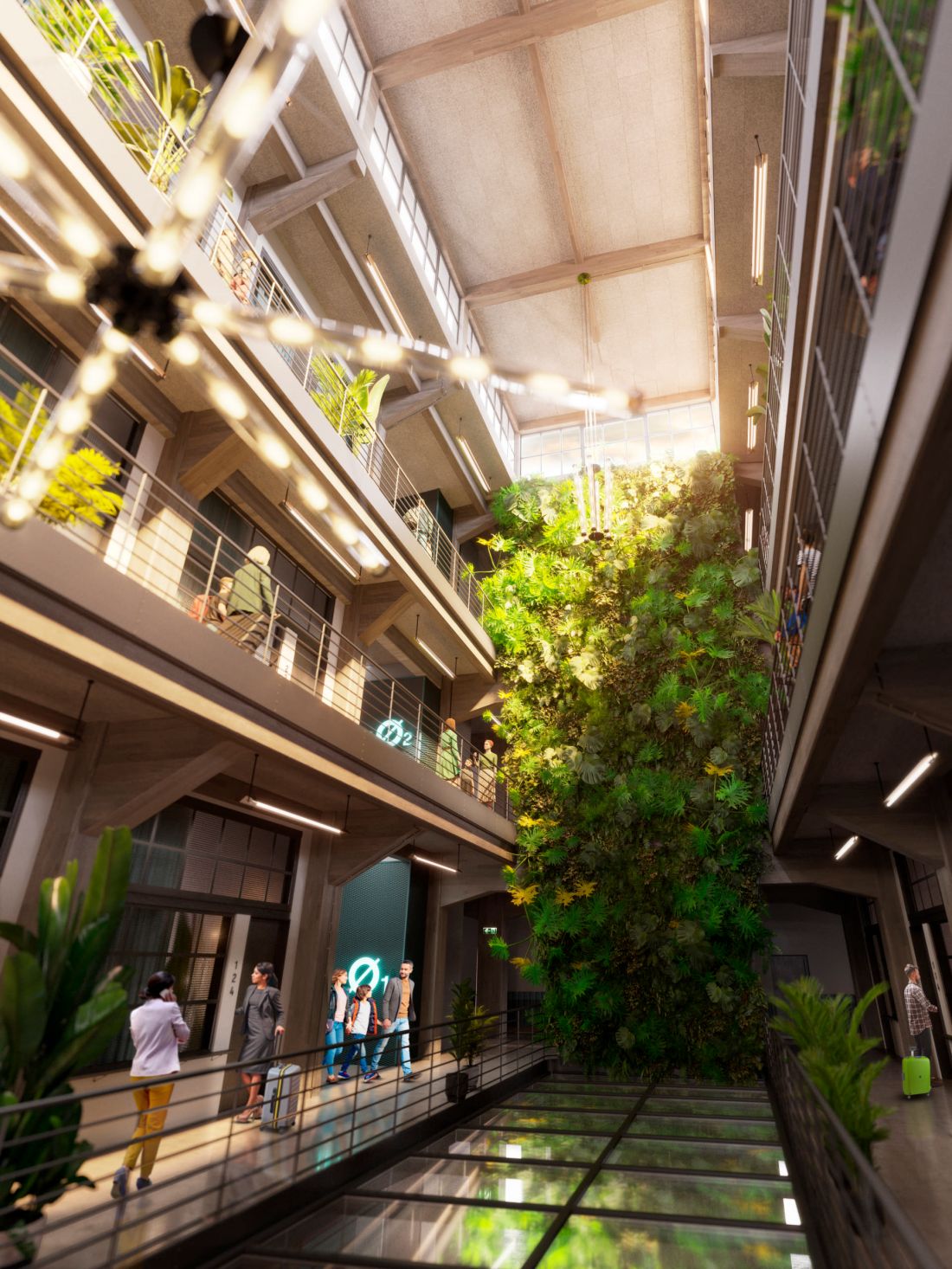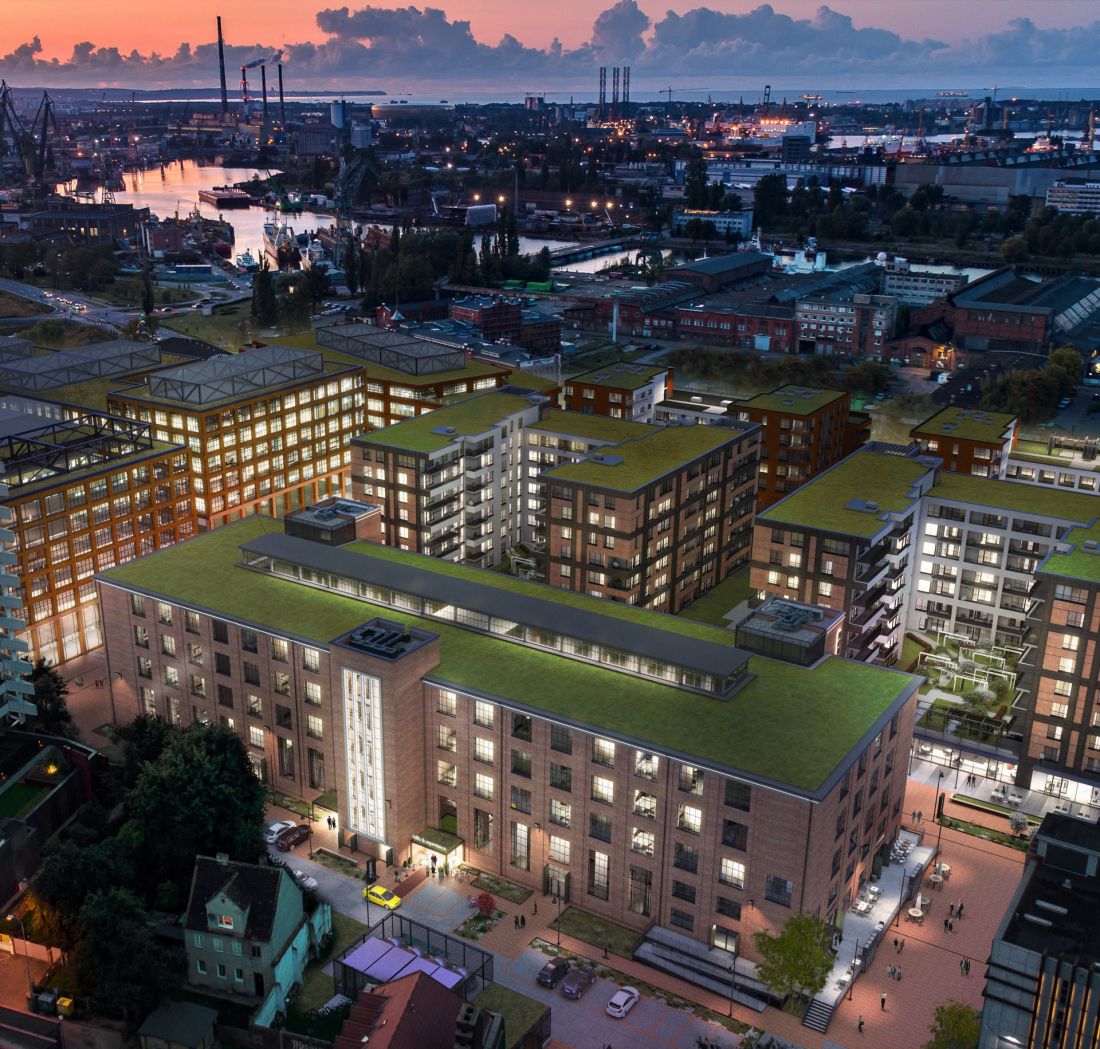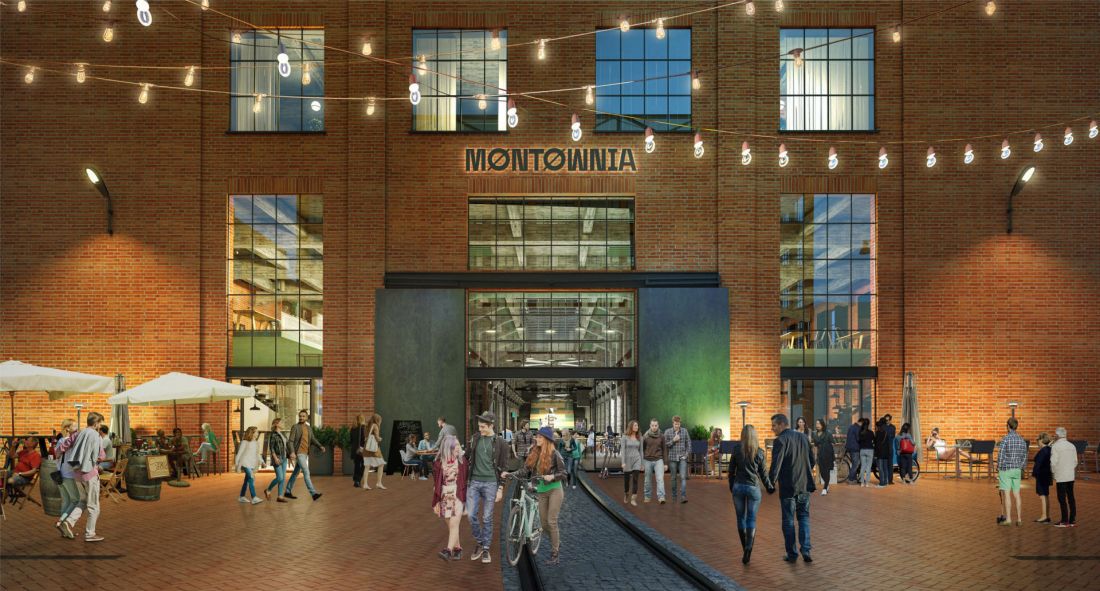Abandoned and in need of adaptation, post-industrial buildings are no longer seen as a problem. Increasingly, they are becoming an inspiration for creating new places for recreation and leisure. For investors and architects from Rayss Group, such a project is the Gdansk MONTOWNIA.
An important element of Montownia is to be the lofts located on the top floor
© Rayss Group
The former U-Boat Hall in Gdansk was built in the 1930s and probably served as an assembly area for ship parts at the then-operating Schichau Shipyard. In 2018, the building was entered in the register of historical monuments. The building will be rebuilt and will serve functions of a hotel, restaurant and conference and business character. For the architects and investors, the most important thing was to preserve the post-industrial character of the building - to restore the internal spatial layout and highlight the reinforced concrete structure of the building.
Joanna and Lukasz Rayss, founders of Rayss Group, will talk about the design process, expectations, arranging the area around the Assembly Plant and the use of greenery in the process.
Wiktor Bochenek: The former U-Boat Hall is included in the register of historical monuments. How did this affect the design work - what did you try to preserve, and what was new introduced into the space?
Lukasz Rayss: The historical context, both in its functional and purely material dimensions, was obviously a key inspiration and design guideline for us. It was all the more difficult because the original function of this machine building is actually still a partial mystery to this day. In addition, everything indicates that this function was only carried out during World War II, so for a relatively short period of time. After that, the building was already used mainly as a warehouse, with all the consequences associated with the treatment of storage facilities in the post-war years. Additionally, from the perspective of today's Ministry's efforts to inscribe the site of the former Gdansk Shipyard on the UNESCO list, we faced the challenge of reconciling our respect for the building's original pre-war form with the seemingly contradictory post-war "scenography." The building itself definitely stands out from both the buildings associated with the heritage of the Imperial Shipyard or the Schichau Shipyard, as well as the post-war buildings typical of the Gdansk Shipyard. It is original in this space with its monumental and symmetrical form. Even the gates, which have a decidedly industrial character, are reminiscent of an official entrance to a public facility. Hence, in a way, the facility's ease of adaptation to new functions in an urban perspective.
this is what the hall looked like before work began
© Rayss Group
The overriding goal of the design work on this monument was to restore the original internal spatial layout and emphasize the magnificent rhythmic reinforced concrete structure of the building, while minimally interfering with the historical substance.
The space of the first floor, almost eight meters high, was opened up as much as possible and the secondary ceiling above this floor was dismantled, revealing the true heart of the building - the galleried layout visible through all floors.
The design for the redevelopment and change of the building's function called for the creation of a multifunctional space: catering, boutique retail, service and hotel.
The eastern part of the first floor, divided into two intermediate levels, imposed the idea of a distinctive internal staircase-platform of almost five meters high leading to the conference area.
Agreen wall as the finial of the staircase, an internal viewing axis and at the same time a symbol of the hall's new life, emphasized the monumental character of the building's interior, leading the eye through the remaining floors where the serviced apartments were located.
The unique entrances to the apartments are preserved historical steel frames, duplicated in the design by glass and aluminum structures that allow acoustic and fire protection parameters to be maintained.
The interference with the body of the building was intended to be minimal and limited to the necessary replacement of window frames, cleaning and repair of the facade and replacement of elements damaged over the years.
The dismantled elements were used inside, creating new forms of interior furnishings while also being a witness to history.
The assembly plant is intended to be a place for meetings and recreation
© Rayss Group
Wiktor Bochenek: How has the Montownia's surroundings been resolved?
Joanna Rayss: Contemporary elements related to climate change adaptation, which were also agreed to by the Pomeranian Regional Monument Conservator despite strict guidelines, are evidence of an understanding of the need to combine history with contemporary climate challenges. A new element in the building is the greenery incorporated into the building's surroundings and its functionality - it is definitely also a green infrastructure here to support climate change adaptation through its retention capacity and the natural and hydrological compensation of the development - including the historic one. This is also a nod from the conservation services, as historically there was no greenery in this space. Therefore, its form introduced into the immediate context of the Hall has the character of spontaneous, so-called succession greenery (related to the process of natural overgrowth). In this way, the process of revaluation and a kind of disappearance of the original Shipyard, which gave way to modern functions and problems, with respect for historical content and forms, is symbolically shown....
The surroundings of the Hall are a combination of historical and directly historically inspired surfaces such as the granite cobblestones recovered in the surroundings of the Hall and brushed concrete slabs referring to the storage yards still functioning in the area. It is also greenery limited to climatic-retention and compositional functions. The first type is free-form greenery, while the second is geometric greenery, usually in the form of rows of Italian poplars, separating architectural and landscape interiors.
An important element of the interior is a large green wall
© Rayss Group
Wiktor Bochenek: What was the most important thing in organizing such a multifunctional facility as Montownia?
Lukasz Rayss: That's a very good question! The most difficult thing was what we expected from the day we received the order - reconciling the interests of all participants in the investment process - sometimes contradictory. Reconciling our expectations as architects, the investor, future tenants, finding in all this respect for the existing building and meeting the conservation guidelines was a huge challenge. A challenge that is still ongoing and will continue as long as construction continues. With this task, technical problems such as the thermal or acoustical performance of the building, structural and installation problems, arrangement and technology, are actually receding into the background.
Wiktor Bochenek: Inside, one can notice a large amount of greenery, including a large green wall, how was the greenery inside laid out?
Joanna Rayss: The green wall is very important to us precisely because, first of all, it binds the interior divided by the glass ceiling, in a way diluting this secondary division. It is a symbol of the new life of the hall, and performs a very important acoustic function in this austere concrete building. In addition, it is the only such strong contemporary element associated with an artistic treatment showing the overgrowth and disappearance of the building's original function. It is hoped that this non-obvious artistic operation will be legible to those sensitive to such non-literalism. The message will be further reinforced by Tomasz Krupinski's original composition in the form of a "shoal" suspended in space, with which the green wall enters into a dialogue.
Wiktor Bochenek: Montownia is supposed to be an important place on the map of Tricity - an object that creates a new quality in the post-shipyard complex? How is it to become part of the city landscape?
Lukasz Rayss: This highly original building has full potential to enter as an actual landmark of the city. We tried to do our best to meet this challenge from the architectural and artistic side. We are convinced that in this dimension, thanks to the support of the Pomeranian Regional Monument Conservator and the Investor, there is a chance that the potential can be maximized. It should also not be forgotten that the potential of the Hall itself is strengthened by the urban functionality of its surroundings - the Montownia will become a functional part of a larger development - the intensive residential development Doki Living and the commercial development Doki Office. It simply has to work.
Bird's eye visualization of Montownia
© Rayss Group
Wiktor Bochenek: What was the most difficult part of this project, and what are you proud of?
Lukasz Rayss: I have already told youabout some of the difficulties, while during the course of the project there were elements with which the facility surprised us, despite the performance of a very thorough laser inventory preceding the design work. We discovered intermediate ceilings that were unfit for use and had to be replaced, during demolition there were conflicting structural elements that were able to change the original technical and installation assumptions and often the arrangement. The difficulty in working on such a facility is coming to terms with the fact that the design does not end when the documentation is developed and handed over. The design is created until the very end of the project and is subject to multiple changes in response to the successively discovered secrets of the facility.
We are really proud of this project, the cooperation with the investor, the general contractor's implementation team, the preservation services, and our interdisciplinary design team, which we invited to work together and which guaranteed unanimity in creating the vision of the project.
Wiktor Bochenek: Thank you for the interview!
We also can't overlook the very good cooperation with other architectural studios involved in the huge Doki project, with whom we are creating a new space together.
visualization of the entrance to the building
© Rayss Group
























































